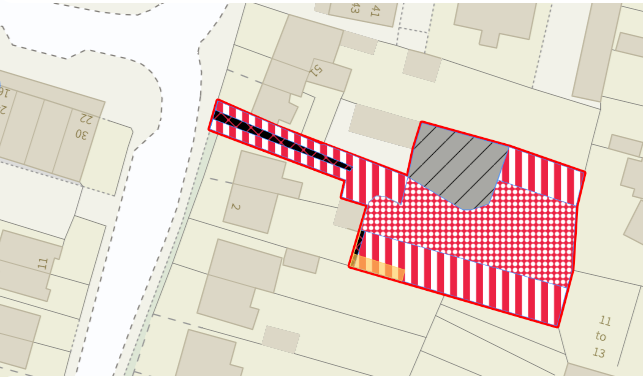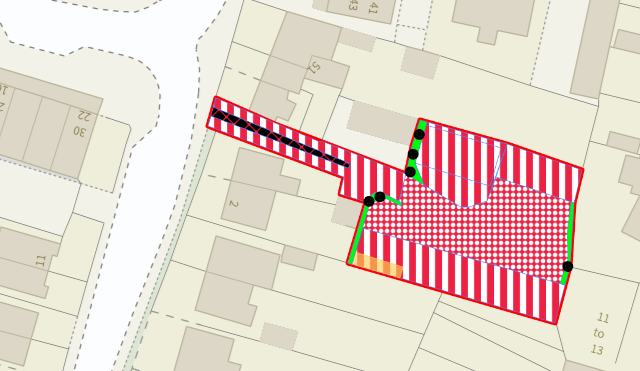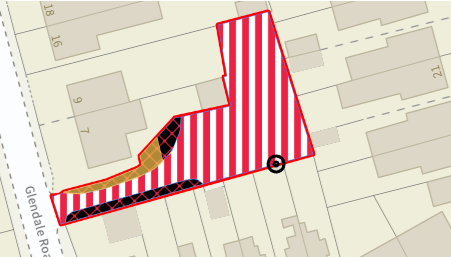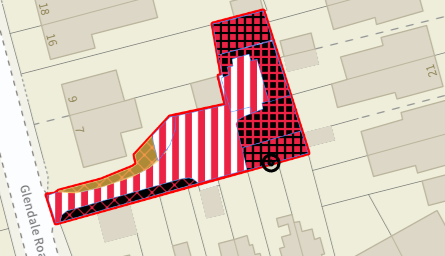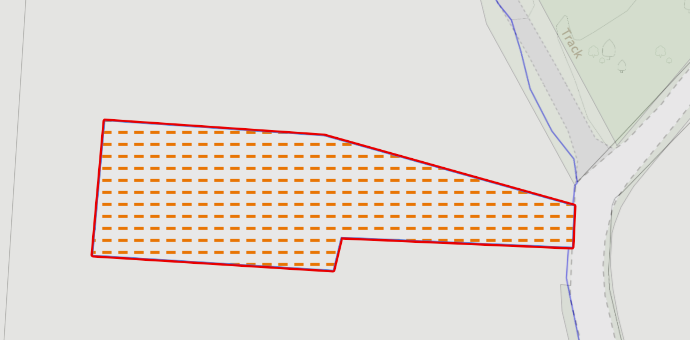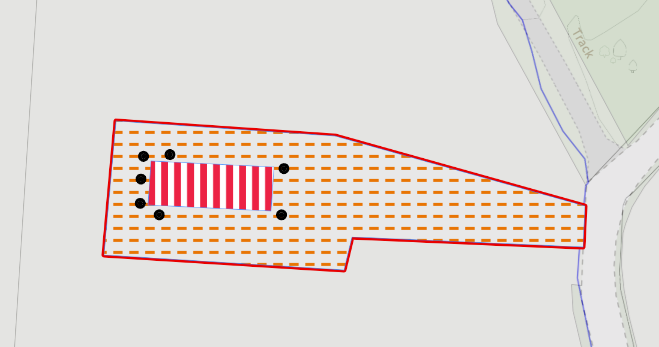What support is out there for SMEs to meet the BNG requirements on small sites?
Oliver Lewis, Founder of Joe's Blooms • January 31, 2025
Biodiversity Net Gain (BNG) is nearly a year old, and it’s clear that the world-leading policy is already reshaping planning across England. From Cornwall to Cumbria, Devon to Durham, the new law has resulted in developers rethinking designs to safeguard existing natural assets and enhance the local environment, with SMEs leading the charge since April.
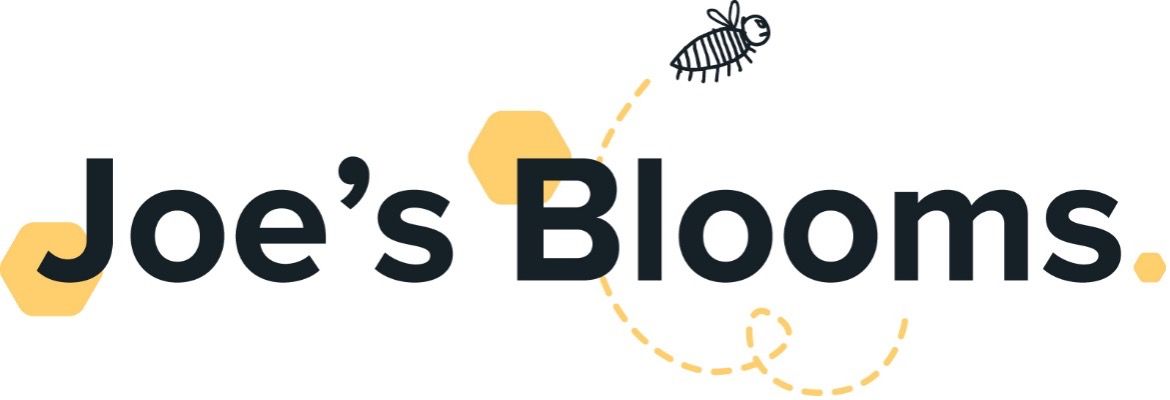
SMEs are the backbone of English development, with 35,000 companies and individuals responsible for the overwhelming majority of planning applications. They may be overlooked in most policy conversations, but make no mistake - small sites are, in many ways, the keystone holding up the entire planning system, and nowhere is that truer than when it comes to BNG compliance.
Of course, BNG is far more than just a regulatory tick box exercise; it’s fundamentally a fresh perspective on development, a new attitude which offers genuine benefits for both the environment and local communities. Greener, more biodiverse sites boost sustainability and appeal to buyers and tenants, making BNG a win-win for all scales of developers and the local environment.
Small sites have unique challenges when it comes to BNG because, as a general rule, new regulations can weigh more heavily on SMEs. Recognising that exempting them would dramatically undermine BNG (as identified in this Net gain impact assessment) the Government introduced the Small Site Metric (SSM). This simpler scheme ensures that even modest developments can contribute to a more biodiverse future without being disproportionately burdened.
Nine months into the SSM, it’s clear that it has gone a long way towards addressing the issues facing small sites, but it is not enough as currently stands. LPAs have made clear that there is a lack of resources and guidance, which has caused a few headaches - but these are being addressed, with Natural England issuing new guidance over December. Now is the time to highlight ways we can further improve the current system – though it’s important that these ideas actually seek to make BNG work to its full potential for developers and biodiversity.
What is out there to help small developers
There is a wealth of resources available on the GOV.UK website and various other online collections of material. Future Homes Hub has worked closely with the Planning Advisory Service (PAS) to provide bngonline.org.uk which has loads of links, resources and explainers – everything you could need to comply with BNG in one place!
Of course, there are also various ecological consultants out there who can help with a small site application, and CIEEM provides a great list of possible consultants based around England. But, for many small sites, there will also be digital tools that you can use to comply with the new requirements.
There are free tools such as Joe Bloom's LPA Portal to help LPAs comply with their BNG obligations too, as well as great paid services like Mycelia.
There are also various digital tool providers who have emerged in the last few years, providing specialist tools that can really help applicants. These include AI Dash, Verna and my own company, Joe’s Blooms.
What digital tools can I use?
Well, it’s worth saying that there are different digital tools for different jobs! For most parts of the BNG process, you can use free tools to complete the process:
- The Exemption Checker is a free online tool that can help you determine whether BNG applies to your development
- You can use the first part of the Joe’s Blooms BNG Tool to see whether you are genuinely a small site for no charge
When it comes to paying tools, the BNG Tool is a simple-to-use, end-to-end DIY tool that allows any eligible small site applicant to fully comply with BNG without the need for any consultant. Everything that you need to complete the whole process in a matter of minutes is provided directly to you – there’s a video explaining how it all works here!
The stats from our first few months hopefully show confidence on how digital tools can be used for smaller sites:
There were over 12,000 uses across the entire range of Joe’s Bloom's tools, allowing users to determine whether they need to comply with BNG and/or to help produce their biodiversity statement and/or to produce biodiversity metric sheets and habitat plans.
Over 500 planning applications used the Joe’s Blooms “Biodiversity Net Gain Tool” to complete all elements of their BNG application.
98% of all planning applications that used the “Biodiversity Net Gain Tool” reported no problems or issues.
42% of all uses of the BNG tool were completed in under 24 hours.
Submissions were made to over 200 Local Planning Authorities.
Case studies of success
We’ve already seen how our platform has transformed the way SMEs approach BNG. Here are three examples of how digital tools help Small Sites comply with BNG in the validation stage in a timely and cost-effective way:
Case Study 1: New Dwelling House and Garden in Greater Manchester
A recent project involved developing a new house and garden on a previously vacant urban site. The site had been abandoned for years, resulting in the natural growth of vegetation and the creation of important urban habitats, including trees.
Because the site lacked distinct habitats and was clearly a “small” site, the applicant was able to use the Small Sites Metric. This meant that they could complete the process themselves and not need to hire an ecological consultant, saving time, effort, and money for both themselves and the consultancy industry, which has highlighted that such small sites are not appropriate for dedicated specialists.
Working with the team at Joe’s Blooms, digital tools were used to quickly map the site and assess the biodiversity impact of their proposed works. This revealed—in a matter of minutes—the impact on the local habitats. Through iterative design changes, the applicant was able to explore various ways to minimise habitat disruption while incorporating grass into the garden to enhance biodiversity.
The process was rapid and efficient, and the final designs significantly increased biodiversity. All reports, metric sheets, and habitat plans were completed within hours, ensuring compliance and a positive ecological outcome.
| Project size | 1,648 m2 |
|---|---|
| AHBU gain: | 0.0501 (15.18%) |
| HBU gain: | - |
| Estimated time to complete: | Under 1 day |
| Trading Rules impact: | - |
| Development type | Other (Agricultural Building) |
| Applicant type: | Farmer |
Case Study 2: New Garages in Warwickshire
A small developer was tasked with designing new garages in Warwickshire. The site included sealed surfaces and some plant habitats, rendering it ineligible for a BNG exemption. In addition, there was a distinct lack of land on the site, raising serious questions over whether or not on-site gains would be viable. However, because they were using digital tools it was possible to identify on-site potential very quickly – both by conserving certain habitats and by amending the design to allow for those habitats to then be enhanced.
Having found a solution, the applicant revised their plans to replace unnecessary paving with grassland and trees, achieving a biodiversity gain of over 10% in compliance with the mitigation hierarchy. The updated designs were submitted promptly to the LPA, avoiding delays and additional costs while providing a sustainable and compliant solution.
| Project size | 1,1189 m2 |
|---|---|
| AHBU gain: | 0.0112 (12.30%) |
| HBU gain: | - |
| Estimated time to complete: | Under 1 day |
| Trading Rules impact: | - |
| Development type | Commercial |
| Applicant type: | Architect |
Case Study 3: Agricultural Field and Storage Barn
A project involving an agricultural field with winter stubble required the construction of a storage barn. To offset the biodiversity impact, the team used digital tools to quickly map out the site and determine the impact of the new building. Here the issue was the lack of obvious enhancements that could be undertaken as the habitat type that was being built upon is one that lacks enhancement options.
However, this is again where digital tools came in useful – as it allowed the applicant to explore creation options. They realised that saplings could be integrated into the design of the new building and, using the GIS-based tools that are in our software, were able to experiment with strategically placing saplings to complement the existing ecological network—a simple process that resulted in a suitable solution being found in just a matter of minutes.
| Project size | 583 m2 |
|---|---|
| AHBU gain: | 0.0245 (14.93%) |
| HBU gain: | - |
| Estimated time to complete: | Under 1 day |
| Trading Rules impact: | - |
| Development type | Residential |
| Applicant type: | Individual |
In all three cases, by using Joe’s Blooms’ digital tools, the applicants were able to quickly map their sites, explore various design options and find viable, proportionate on-site options that allowed them to maximise biodiversity gains. In each case, there was a “scary moment” where it seemed as if there was no obvious way to get the 10%, but within a matter of minutes, they were able to develop plans that not only met that target but also adhered to the mitigation hierarchy.
These examples highlight the versatility and effectiveness of the SSM when combined with our tools and support. With thousands of people using the tool across England and hundreds upon hundreds of successful uses of the BNG tool, it is clear that digital tools can make BNG extremely simple - and affordable - for small sites.
Of course, our tools are just one piece in the puzzle. As we say, there are lots of resources – both free and paid for – out there. But what is increasingly clear is that these resources can really make a difference. And that is vital. Small sites are the backbone of the new policy, and we mustn't give up on them, but instead work together to ensure that this vital part of BNG works. Our environment depends on it.


